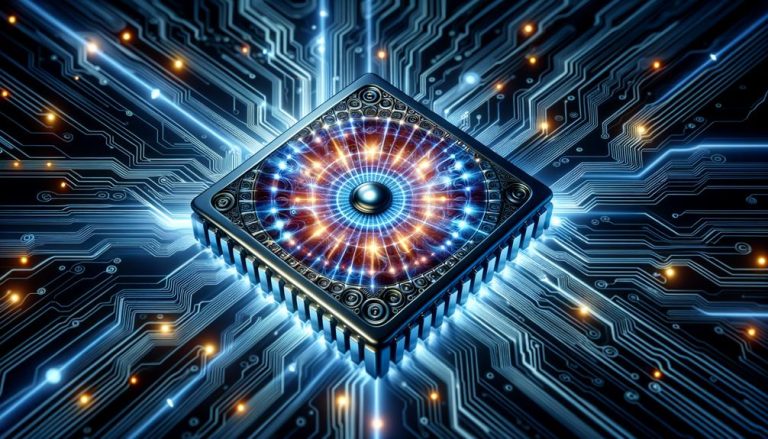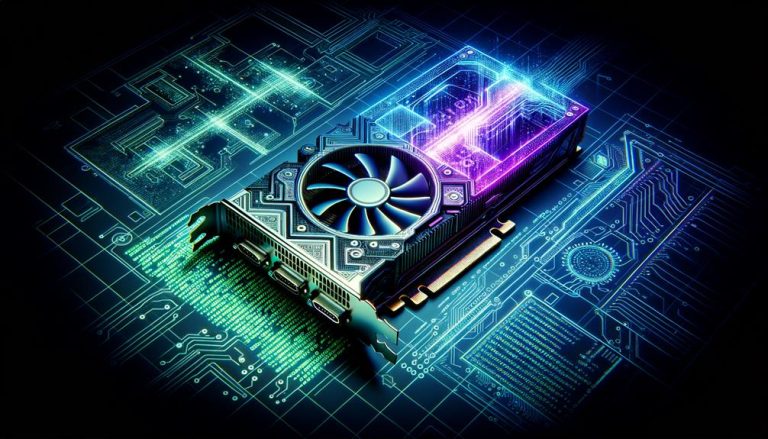In the ever-evolving field of computer science, image processing has emerged as a crucial discipline, employing computer algorithms to manipulate digital images. Its applications span a wide range of domains, including face recognition, image compression, entertainment, and biomedical research.
By harnessing preprocessing techniques, deep learning models in computer vision can achieve remarkable performance enhancements. This article provides a comprehensive overview of image processing, exploring its types, phases, techniques, and applications.
Additionally, it delves into advanced and specialized techniques, paving the way for innovative and visionary advancements in this liberating field.
Conclusiones clave
- Image processing is the manipulation of digital images using computer algorithms.
- Preprocessing techniques can significantly improve the performance of deep learning models in computer vision.
- Image processing techniques include image enhancement, restoration, segmentation, object recognition, and compression.
- Applications of image processing include face recognition, object detection, medical imaging, surveillance systems, and augmented reality.
Types and Phases of Image Processing
The subtopic of 'Types and Phases of Image Processing' encompasses various techniques and stages involved in the manipulation and analysis of digital images using computer algorithms. It is an innovative and visionary field that offers liberation to those seeking to explore the vast possibilities of image manipulation and analysis.
Image acquisition methods play a crucial role in this process, as they determine the quality and characteristics of the digital images being processed. Additionally, image restoration algorithms are employed to remove noise, blur, and other forms of image degradation, thereby enhancing the overall quality and clarity of the images.
Image Processing Techniques
An essential aspect of image processing involves employing various techniques to manipulate and analyze digital images using computer algorithms. This enables us to enhance image quality, remove image noise, and fill in missing or damaged parts of an image.
Some innovative image processing techniques that have emerged in recent years include:
- Image denoising: Algorithms that reduce noise in an image, improving its clarity and removing unwanted artifacts.
- Image inpainting: Methods for filling in missing or damaged regions of an image, seamlessly blending them with the surrounding pixels.
- Deep learning-based approaches: Utilizing neural networks to learn complex patterns and features in images, leading to more accurate and efficient image processing.
- Generative models: Generating new images using techniques like Generative Adversarial Networks (GANs), allowing for creative and diverse image synthesis.
- Multi-modal image processing: Integrating information from different imaging modalities, such as combining MRI and CT scans to improve medical image analysis.
These techniques push the boundaries of image processing, opening up new possibilities for liberation and innovation in various fields, such as healthcare, entertainment, and scientific research.
Applications of Image Processing
Moving forward into the realm of applications, image processing has found widespread use in various industries and domains. Two notable applications of image processing include its use in art restoration and satellite imaging. In art restoration, image processing techniques are employed to analyze and enhance digital images of deteriorated artworks, allowing restorers to accurately identify and repair damages. This helps preserve cultural heritage and ensure that future generations can appreciate these masterpieces. In satellite imaging, image processing plays a crucial role in analyzing and interpreting satellite imagery for various purposes, such as weather forecasting, urban planning, and environmental monitoring. By extracting valuable information from satellite images, image processing enables us to gain insights and make informed decisions that impact our lives and the planet.
| Applications of Image Processing | |
|---|---|
| Art Restoration | Satellite Imaging |
Advanced Image Processing Techniques
Continuing the exploration of image processing applications, the next focus is on advanced techniques used in the field. These techniques push the boundaries of traditional image processing and pave the way for groundbreaking advancements.
Here are five captivating techniques that are revolutionizing the field:
- Morphological processing in medical imaging: This technique enables the extraction of image components, sharpening or blurring edges, and is particularly useful for shape representation in medical imaging applications. It aids in the accurate diagnosis and treatment planning in the medical field.
- Image compression using deep learning: Deep learning models, such as autoencoders, are being employed to achieve image compression with superior results. By leveraging the power of neural networks, image compression can be performed more efficiently and with higher quality, allowing for better storage and transmission of images.
- *To be continued…*
Specialized Image Processing Techniques
What specialized image processing techniques are being used in various fields and industries? In the era of deep learning applications in image processing, traditional image compression techniques have limitations that are being overcome through innovative approaches. One such approach is the use of deep learning-based image compression algorithms, which leverage the power of autoencoders to achieve better compression ratios while maintaining image quality. These techniques have found applications in industries such as multimedia, healthcare, and surveillance systems. Additionally, advanced image manipulation techniques like Neural Style Transfer and autoencoder-based frameworks enable the alteration of image appearance, opening up new possibilities in fields like entertainment and advertising. Furthermore, the synthesis of new images using Generative Adversarial Networks (GANs) and the mapping between input and output images using models like Pix2pix have revolutionized image generation and image-to-image translation, paving the way for innovative applications in fields like virtual reality and computer graphics.
| Field/Industry | Specialized Image Processing Technique | Application |
|---|---|---|
| Multimedia | Deep learning-based image compression algorithms | Efficient storage and transmission of large image datasets |
| Healthcare | Neural Style Transfer and autoencoder-based frameworks | Enhanced visualization and analysis of medical images |
| Surveillance Systems | Object detection using Convolutional Neural Networks (CNNs) | Real-time identification and tracking of objects of interest |
Preguntas frecuentes
What Are the Common Challenges in Face Recognition Using Image Processing Techniques?
Challenges in face recognition using image processing techniques include variations in lighting conditions, pose, and facial expressions, which can affect the accuracy of the recognition system. Techniques such as feature extraction, geometric normalization, and machine learning algorithms are commonly used to mitigate these challenges.
However, the development of robust and accurate face recognition systems still requires addressing issues like occlusions, aging effects, and the ability to handle large-scale datasets. Innovative approaches, such as deep learning and 3D face modeling, hold promise for overcoming these challenges and improving face recognition accuracy.
How Does Image Compression Affect the Quality of Medical Images in Diagnostic Applications?
Image compression, while reducing the size of medical images for storage or transmission purposes, can affect the quality of radiological diagnosis. The trade-off between image compression and storage requirements needs to be carefully considered in medical imaging.
The impact of image compression on the accuracy of radiological diagnosis should be evaluated to ensure that the compressed images still provide sufficient information for accurate interpretation by medical professionals. Balancing the need for efficient storage with the preservation of image quality is crucial in diagnostic applications of medical imaging.
Can Image Processing Techniques Be Used to Detect and Track Multiple Objects in Real-Time Surveillance Systems?
Image processing techniques have the potential to revolutionize real-time object tracking in surveillance systems. By leveraging advanced algorithms and deep learning models, it is possible to detect and track multiple objects with high accuracy and efficiency.
This innovative approach liberates surveillance systems from the limitations of traditional methods, allowing for improved security and situational awareness. Real-time object tracking can greatly enhance the effectiveness of surveillance systems, enabling faster response times and proactive threat detection.
What Are the Limitations of Using Deep Learning Models for Image Segmentation in Medical Imaging?
The use of deep learning models for image segmentation in medical imaging has several limitations.
Firstly, these models require large amounts of labeled training data, which can be time-consuming and costly to obtain.
Secondly, the interpretability of deep learning models is often limited, making it difficult to understand and explain the segmentation results.
Lastly, deep learning models may struggle with handling rare or unseen medical conditions, as they heavily rely on patterns learned from the training data.
Overcoming these limitations is crucial for improving the accuracy and reliability of image segmentation in medical imaging.
How Can Image Processing Techniques Be Applied to Enhance the Visual Quality of Augmented Reality Overlays?
Image processing techniques can be applied to enhance the visual quality of augmented reality overlays. This can be done by improving various aspects of the augmented content. Real-time image processing in virtual reality gaming can be utilized to enhance the realism and immersiveness of the virtual environment.
Additionally, image processing techniques can be employed to enhance satellite imagery. This can be done by improving resolution, reducing noise, and enhancing image clarity. These techniques enable a more visually appealing and accurate representation of the augmented reality overlays. As a result, they provide a more immersive and engaging experience for users.
Conclusión
In conclusion, image processing is a dynamic and vital field in computer science with numerous applications across various domains.
By employing preprocessing techniques, deep learning models can achieve improved performance in computer vision tasks.
Image manipulation techniques are widely used in the entertainment industry, while image inpainting techniques enhance the accuracy of AI systems in biomedical applications.
Advanced techniques like morphological processing, object detection, and recognition further expand the capabilities of image processing.
Specialized techniques, such as deep learning-based object detection and image generation, continue to push the boundaries of image processing technology.




